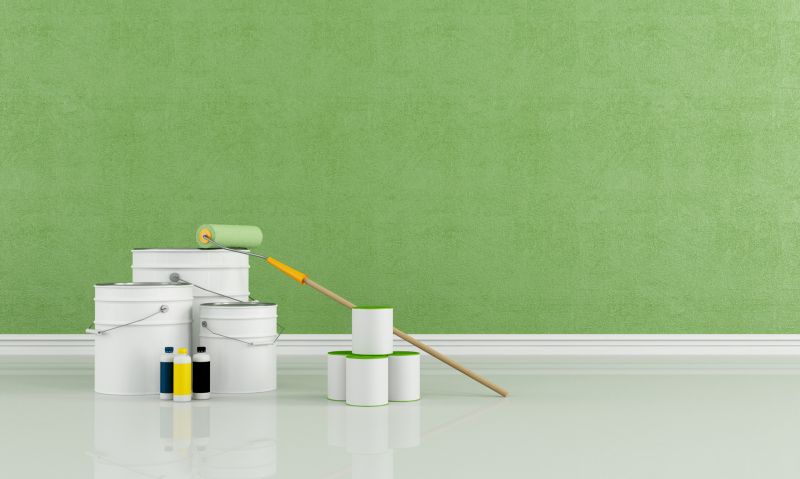Leading Products For Interior Paintings To Elevate Your Space
Discover essential tools and supplies that ensure smooth application, vibrant finishes, and professional-looking interior walls.
 Interior painting projects in Mount Vernon, OH, can significantly enhance the ambiance and aesthetic appeal of any space. Choosing the right products for interior painting involves understanding various tools and materials that contribute to a smooth, durable, and professional-looking finish. From primers and paints to brushes and rollers, each component plays a crucial role in achieving the desired results. Proper preparation and selection of quality products can make a substantial difference in the ease of application and the longevity of the paint job.
Interior painting projects in Mount Vernon, OH, can significantly enhance the ambiance and aesthetic appeal of any space. Choosing the right products for interior painting involves understanding various tools and materials that contribute to a smooth, durable, and professional-looking finish. From primers and paints to brushes and rollers, each component plays a crucial role in achieving the desired results. Proper preparation and selection of quality products can make a substantial difference in the ease of application and the longevity of the paint job.
Top Overall Option
Multi-Purpose Interior Paint Set
A versatile set of interior paints designed for various surfaces and finishes, offering ease of application and consistent coverage. Ideal for both DIY enthusiasts and professionals seeking reliable results across different rooms and conditions.
Types of Products For Interior Paintings
Primer
Prepares surfaces for painting, enhances adhesion, and can block stains or previous colors.
Interior Wall Paint
Available in matte, satin, semi-gloss, and gloss finishes to suit different aesthetic preferences and functional needs.
Paint Sprayers
Allow for quick and even coverage over large areas, ideal for smooth finishes on walls and ceilings.
Brushes
Various sizes and shapes, including angled brushes for corners and detail work.
Rollers
Different nap lengths for smooth or textured surfaces, providing efficient coverage.
Painter’s Tape
Helps create clean lines and protect adjacent surfaces during painting.
Drop Cloths
Protect furniture and flooring from paint splatters and drips.
Sandpaper and Scrapers
Prepare surfaces by smoothing or removing old paint and imperfections.
Extension Poles
Extend reach for ceilings and high walls, reducing ladder use.
Paint Additives
Modify drying time, texture, or durability of interior paints.
Cleaning Supplies
Ensure surfaces are free of dust, grease, and debris before painting.
Touch-Up Pens
Assist in minor repairs or touch-ups post-painting.
Popular Choices
A widely used option for walls and ceilings, available in a variety of finishes.
Favored for their efficiency in covering large surface areas quickly.
Commonly selected for achieving crisp, clean lines.
Frequently chosen to ensure even paint application and surface prep.
Popular for detailed work and touch-ups.
Gaining popularity for large projects and professional finishes.
Essential for protecting floors and furniture during painting.
Commonly used for surface preparation.
Popular for reaching high ceilings and tall walls.
Chosen for customizing paint properties.
Useful for minor corrections after painting.
A frequent choice for its ease of cleanup and low odor.
Specialized for ceilings to reduce splatter and enhance coverage.
Selected for durability and smooth finish on woodwork.
Popular for accents and trim due to its reflective surface.
Often chosen for walls to hide imperfections.
A versatile option balancing sheen and durability.
Designed specifically for applying paint on ceilings efficiently.
When planning an interior painting project, it's important to consider the specific needs of each room, including surface type, lighting conditions, and the desired color or finish. High-quality primers help create a uniform surface and improve paint adhesion, especially on problematic surfaces like drywall or previously painted walls. Choosing the right type of paint—be it matte, satin, or semi-gloss—can influence the overall look and maintenance of the space. Additionally, the selection of appropriate brushes, rollers, and painter's tape can minimize mess and ensure clean edges.
Preparation is key to successful interior painting. Proper surface cleaning, patching holes, and taping off areas prevent issues such as peeling, uneven coverage, or paint bleed. Using tools designed for specific tasks, like angled brushes for corners or foam rollers for smooth surfaces, can optimize the application process. For larger areas, extending tools or paint sprayers may be considered to speed up the job while maintaining quality. Overall, investing in reliable, well-suited products can help achieve a professional finish that lasts over time.
Key Buying Considerations
- Surface compatibility: Ensure the product suits drywall, plaster, or other surfaces.
- Finish type: Decide between matte, satin, semi-gloss, or gloss based on aesthetics and maintenance needs.
- Coverage area: Select products that match the size of your project to avoid shortages or excess.
- Application method: Choose brushes, rollers, or sprayers suited for your skill level and project scope.
- Drying time: Consider how quickly the product dries to plan your work schedule accordingly.
- Durability: Look for products that offer appropriate resistance to stains, cleaning, or wear.
- Color options: Verify the availability of your desired shades and the ability to tint if needed.
- Ease of cleanup: Opt for low-odor, washable, or water-based products for convenience.
- Primer compatibility: Use suitable primers to enhance adhesion and surface preparation.
- Budget constraints: Balance quality and cost to select products that meet your needs without overspending.
- Environmental conditions: Consider humidity and temperature in your space which can affect drying and finish.
- Brand reputation: While avoiding specific brand guarantees, opting for well-known product lines can ensure consistency.
- Safety features: Choose products with low VOCs or minimal fumes if indoor air quality is a concern.
- Compatibility with existing finishes: Ensure new paint adheres well to existing coatings or surfaces.
- Long-term maintenance: Think about how the finish will hold up over time and ease of touch-up.
This page contains affiliate links; we may earn a commission if you make a purchase through these links, at no additional cost to you.
